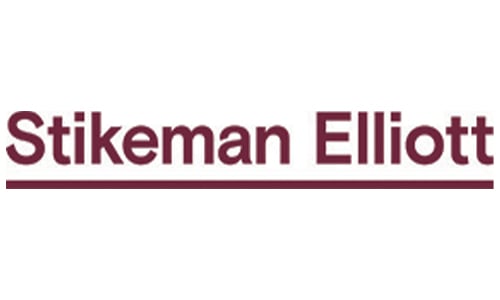On December 20, 2023, the Government of Canada issued long-awaited guidance on reporting requirements (“Guidance”) under the Fighting Against Forced Labour and Child Labour in Supply Chains Act, S.C. 2023, c. 9 (“the Act”). The Guidance addresses some of the interpretation questions discussed in our previous posts and also fleshes out the submission process – notably by unveiling an online questionnaire that all entities that are required to report will have to complete.
In this post we look at some of the more significant aspects of the Guidance and how they may guide businesses in preparing their reports. While some questions remain, the Guidance has significantly clarified a number of key issues, as discussed below.
Application of the Act
Guidance relating to the determination of entity status
In assessing whether an organization has a “place of business in Canada”, “does business in Canada” or “has assets in Canada”, issuers should make reference to the ordinary sense of these terms and to the criteria applied by the Canada Revenue Agency. Importantly, doing business in Canada does not require a physical presence in Canada.
With respect to the monetary and numeric thresholds (“Size Thresholds”) for assets, revenue and employees, the Guidance suggests that the Government is expecting each entity to report on a consolidated basis (i.e. including entities that it controls and excluding any entity that controls it).
The Guidance confirms that the Size Thresholds apply to the organization’s worldwide assets, revenue and employees and specifies that assets are “gross” rather than “net”, while noting that employees exclude independent contractors.
Guidance on whether an entity is a reporting entity
Under section 9 of the Act, an entity is a reporting entity if it:
- Produces, sells or distributes goods in Canada;
- Imports into Canada goods produced outside Canada; or
- Controls an entity engaged in any of the above.
With respect to the application of the Act to services businesses, the Guidance states that the terms “selling, distributing and importing … are not intended to capture services that solely support the production, sale, distribution or importation of goods.” Examples of such services are marketing, administrative services, financial services and software services.
“Goods” is to be given its ordinary meaning within the subject of trade and commerce and “importing goods” does not include those who buy from a third party who is considered the importer for the purposes of the Customs Act.
The Guidance also acknowledges that there is no prescribed minimum value of goods that an entity must produce, sell, distribute or import, however it states that these terms should be understood as excluding very minor dealings.
The Guidance states that “control” is to be interpreted broadly and is not limited to the understanding of the term under IFRS or GAAP.
Form of the Report
The Guidance sets out detailed rules for the attestation of the report, including recommended text. It also discourages the use of joint reports unless all included entities have similar risk profiles and similar policies and recommends that reports be filed in both English and French.
The report should be in PDF format, limited to a maximum of 100 MB and no longer than 10 pages in length (20 pages if provided in both French and English). The report is to be accompanied by a completed questionnaire and, while it is not required, the Guidance states that entities can use the exact same information and structure provided in the questionnaire to prepare their report; however, entities may include additional information and supplementary content in their report, including charts and graphs.
Contents of the Report
The Guidance recommends that entities include in their reports the names of all foreign legislation under which they have made similar reports (this information is also requested in the Questionnaire). Among other things, the Guidance:
- Reaffirms that no prescribed level of detail is required in the report, provided that detail is appropriate to the size and risk profile of the entity and that each of the content requirements of the Act is addressed.
- States that commercially sensitive information may be excluded and that no specific instances of forced and/or child labour need be referenced.
- Provides examples of the nature of information that may be included in respect of each of the component elements of the report.
- Requires that entities that control other entities describe the policies, activities, diligence, risk assessment, remediation, training and assessment undertaken in respect of such controlled entities as well.
- Welcomes the inclusion of existing action plans and information about planned future steps, but not to the point of turning the report into a mission statement.
- Recommends that straightforward language appropriate to a public-facing document be used.
The Questionnaire
The report must be accompanied by a completed questionnaire. Essentially, the questionnaire is an online form designed to elicit answers to specific questions that can easily be compared between entities. There is both a set of basic, mandatory questions that typically involve choosing from among a number of predetermined responses and an opportunity to expand on those responses, if the entity chooses, with freeform answers up to a 1500 character limit.
Going Forward
In light of the looming initial report filing deadline of May 31, 2024 (and potentially earlier in respect of Canada Business Corporations Act issuers required to provide the report along with their financial statements), entities that have not done so already should be proceeding in earnest to mobilize internal resources to the task of assessing the applicability of the Act and preparing their reports. With the benefit of the newly issued Guidance, they are now much better positioned to do so with confidence.
Read more on the Stikeman Elliott website here.
***
 Keith Chatwin is head of the Corporate Group in Calgary. His practice involves a broad array of securities and general corporate transactions, ranging from public and private debt and equity financing to mergers and acquisitions, corporate restructuring and recapitalizations, and shareholder activism and defense. Keith has acted in respect of a number of contested and uncontested take-over situations, as well as a number of corporate and intercorporate arrangements, including reverse take-overs, spin-outs and asset acquisitions and divestitures. Frequently advising international entities in connection with strategic transactions and project development in Canada, he is head of Stikeman Elliott’s Korea Group and an active member of the firm’s Japan Group.
Keith Chatwin is head of the Corporate Group in Calgary. His practice involves a broad array of securities and general corporate transactions, ranging from public and private debt and equity financing to mergers and acquisitions, corporate restructuring and recapitalizations, and shareholder activism and defense. Keith has acted in respect of a number of contested and uncontested take-over situations, as well as a number of corporate and intercorporate arrangements, including reverse take-overs, spin-outs and asset acquisitions and divestitures. Frequently advising international entities in connection with strategic transactions and project development in Canada, he is head of Stikeman Elliott’s Korea Group and an active member of the firm’s Japan Group.
***
 Andrew Cunningham is a member of the Knowledge Management Group. He is primarily responsible for the firm’s external publications, many of which he writes or edits, and also provides editorial and strategic advice on a wide range of marketing and business development initiatives within the firm. He has expertise in a number of areas of commercial law, including director and officer liability issues.
Andrew Cunningham is a member of the Knowledge Management Group. He is primarily responsible for the firm’s external publications, many of which he writes or edits, and also provides editorial and strategic advice on a wide range of marketing and business development initiatives within the firm. He has expertise in a number of areas of commercial law, including director and officer liability issues.
***
 Brendan Kennedy is an associate in the Corporate and Securities Group. Brendan’s practice focuses on public and private M&A, capital markets, corporate finance and general corporate and commercial matters. Brendan also advises clients with respect to corporate governance, securities law compliance and stock exchange matters.
Brendan Kennedy is an associate in the Corporate and Securities Group. Brendan’s practice focuses on public and private M&A, capital markets, corporate finance and general corporate and commercial matters. Brendan also advises clients with respect to corporate governance, securities law compliance and stock exchange matters.
***
 Ian Trimble is an associate in the Corporate Group. His practice focuses on providing regulatory and commercial counsel to companies regulated by Health Canada, including drug manufacturers and wholesalers, cannabis companies, and companies involved in the marketing and sales of natural health products, food and beverage, cosmetics, and medical devices. He provides strategic counsel on market access and compliance strategies, and helps clients deal with regulatory and pre-clearance agencies. Ian also advises on the regulation of healthcare professionals and the interactions between companies and those professionals.
Ian Trimble is an associate in the Corporate Group. His practice focuses on providing regulatory and commercial counsel to companies regulated by Health Canada, including drug manufacturers and wholesalers, cannabis companies, and companies involved in the marketing and sales of natural health products, food and beverage, cosmetics, and medical devices. He provides strategic counsel on market access and compliance strategies, and helps clients deal with regulatory and pre-clearance agencies. Ian also advises on the regulation of healthcare professionals and the interactions between companies and those professionals.





